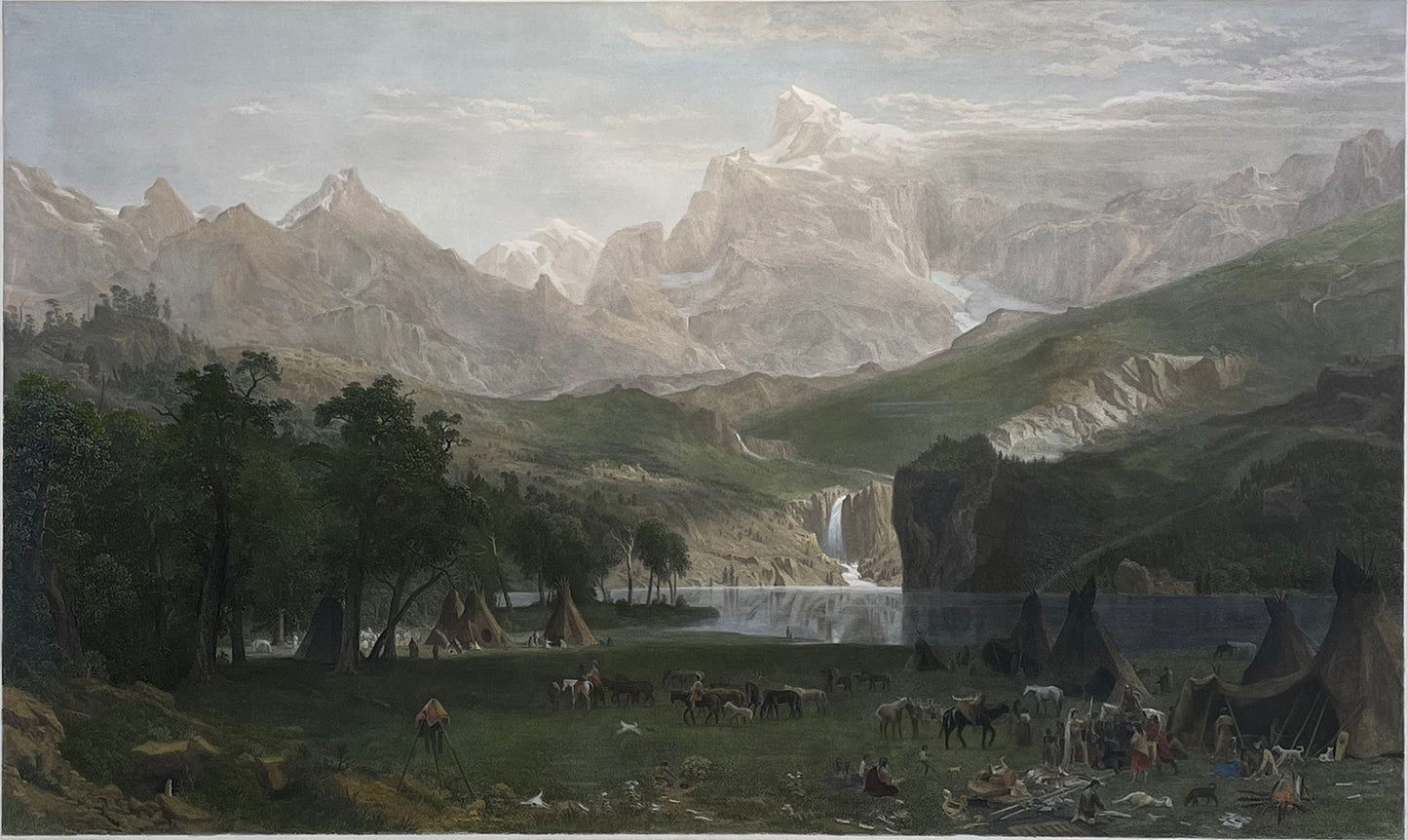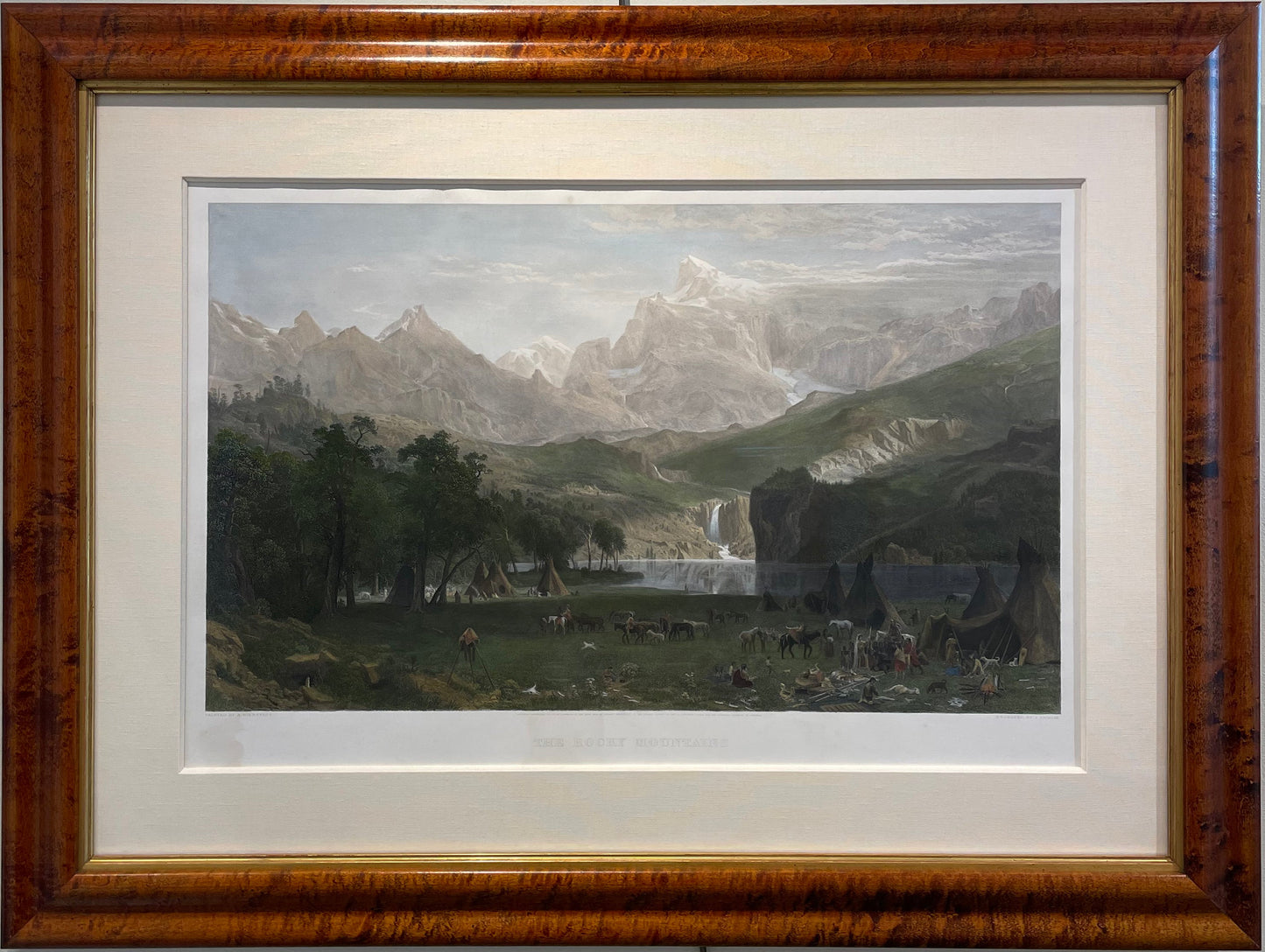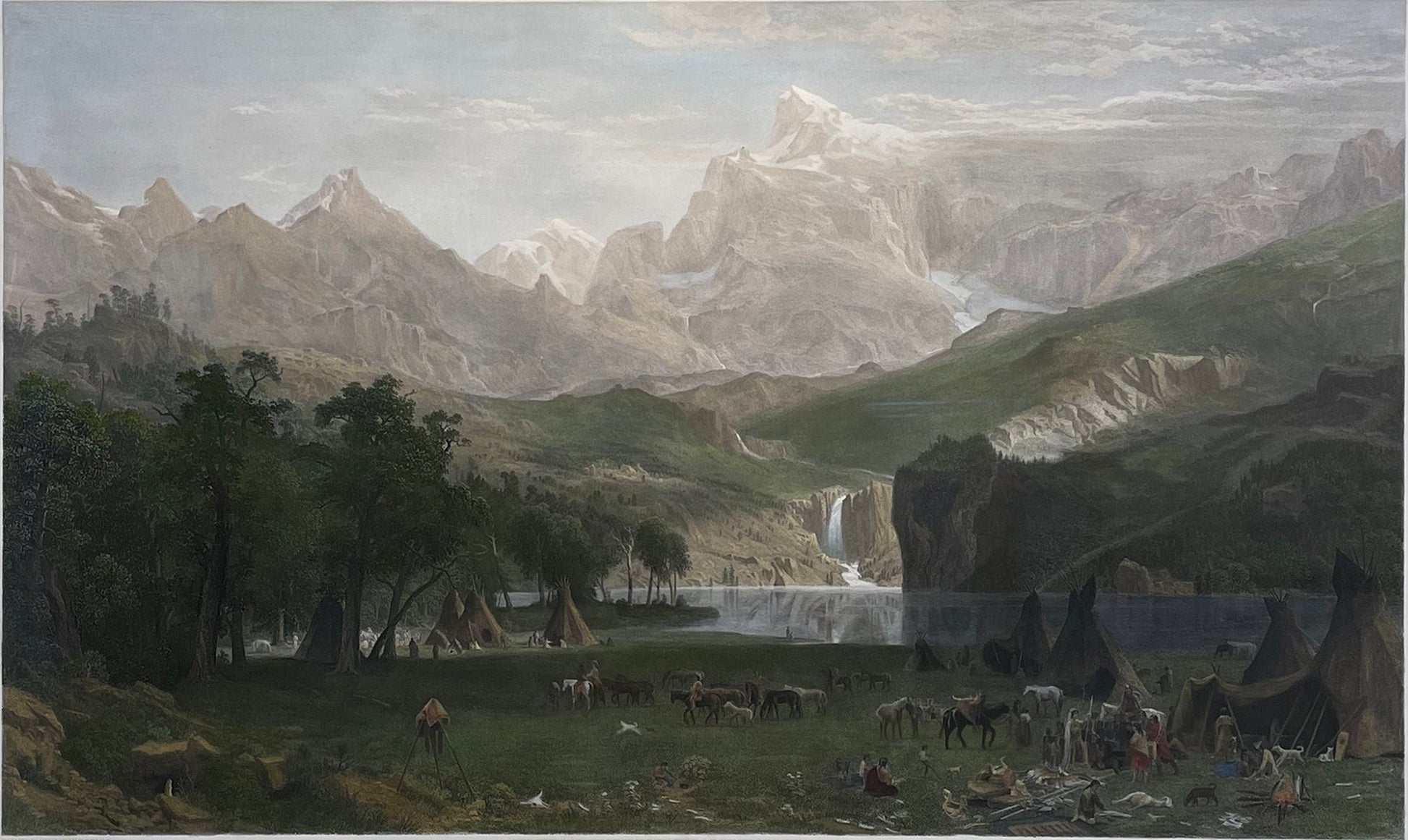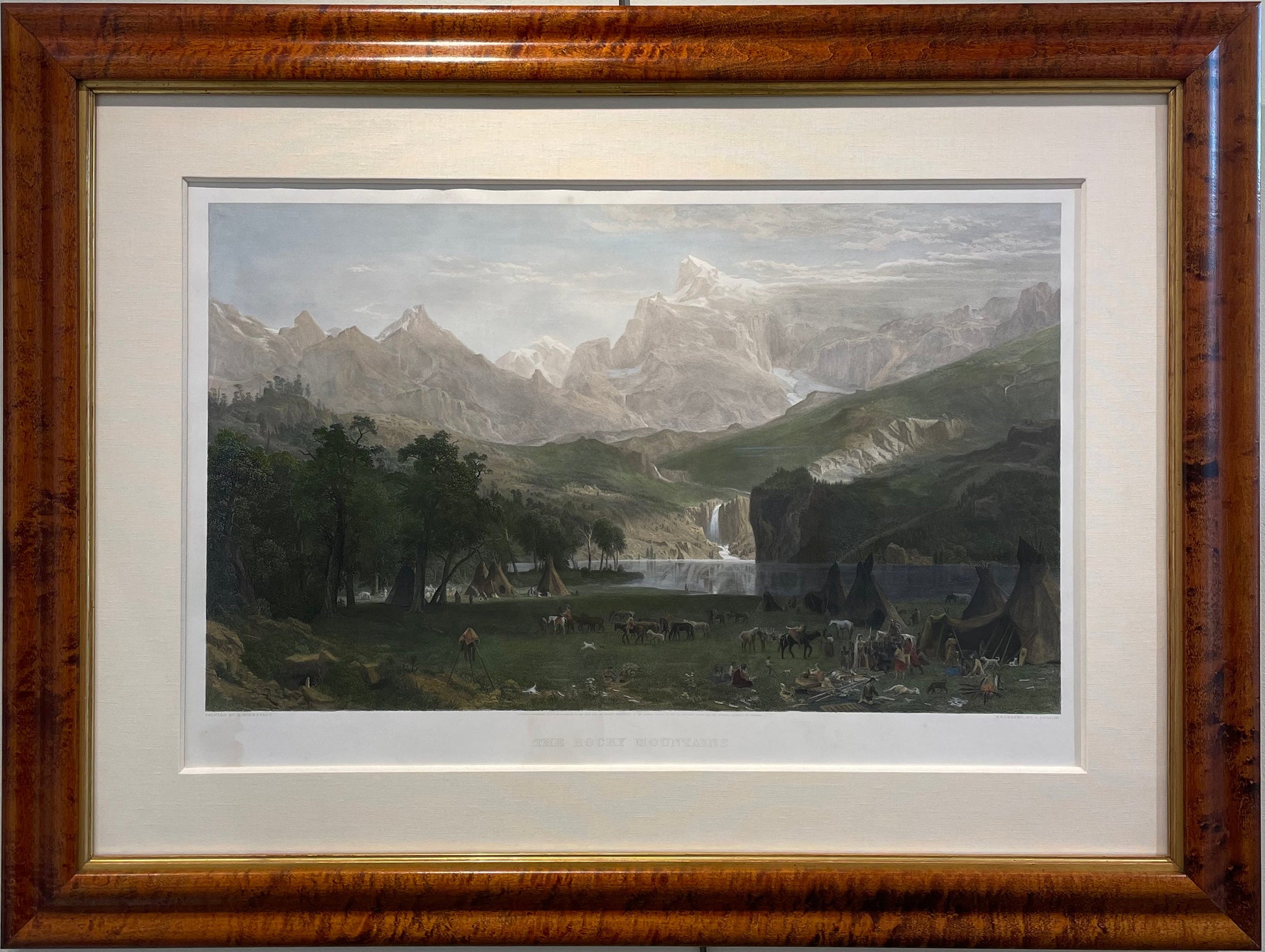Albert Bierstadt. 'The Rocky Mountains'. Published London, Thomas McLean, 1869
Albert Bierstadt. 'The Rocky Mountains'. Published London, Thomas McLean, 1869
Couldn't load pickup availability
Albert Bierstadt (1830-1902)
The Rocky Mountains
Published London, Thomas McLean, 1869
Chromolithograph by H.M. Long
Image size: 18 3/4 x 32 1/4” Framed size: 27 1/2 x 41”
Albert Bierstadt (1830-1902) was the nineteenth century chronicler par excellence of the American West. He undertook several trips to the Rocky Mountains and Yosemite Valley, where he made sketches of what would later become his most famous paintings. This brilliant chromolithograph depicts light breaking through a bank of thunderclouds above a valley. Indians on horseback dash down a mountainside toward an encampment of tepees along the valley. This image brilliantly captures American landscape painting of the period at its most heightened and rapturous. This chromolithograph was issued by Thomas McLean as a pair to The Rocky Mountains (Landers Peak). As many as 20 stones stones were used to capture the rich, sumptuous palette of the original painting, which now resides in the Brooklyn Museum of Art.
(Nancy Anderson and Linda S. Ferber, Albert Bierstadt Art & Enterprise, pp. 274-275).
This and other popular canvases by the German-born Albert Bierstadt shaped the visual identity of the American West in the United States and abroad. In early 1859 he accompanied a government survey expedition, headed by Frederick W. Lander, to the Nebraska Territory. By summer, the party had reached the Wind River Range of the Rocky Mountains in present-day Wyoming. Painted in New York after Bierstadt’s return from these travels, this work advertised the landscape as a frontier destined to be claimed by White settlers, according to the doctrine of Manifest Destiny. This belief that Americans were the divinely ordained "masters" of the continent systematically ignored with dire consequences the presence of Indigenous populations, such as the Shoshone peoples depicted in the picture’s foreground. Publicly exhibited to great acclaim, this monumental painting established Bierstadt as a key competitor of the preeminent landscape painter, Frederic Edwin Church (see, for example, 09.95). It was purchased in 1865 for the then-astounding sum of $25,000 by James McHenry, an American living in London. Bierstadt later bought it back and gave or sold it to his brother Edward.




